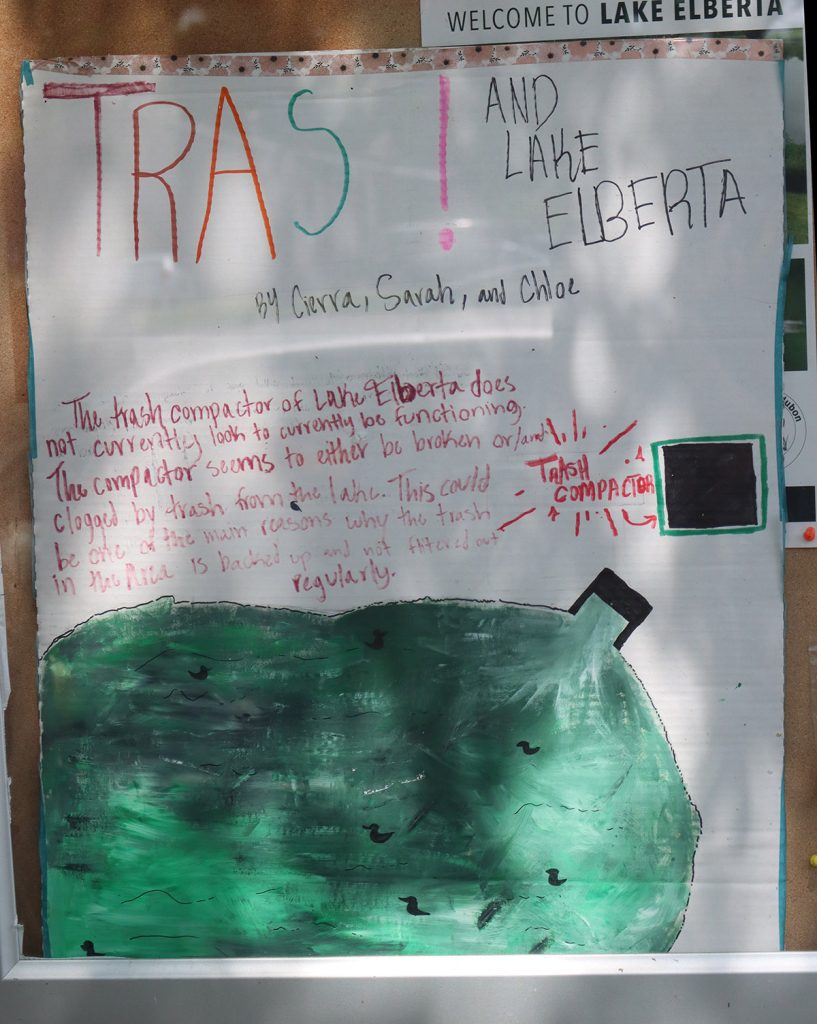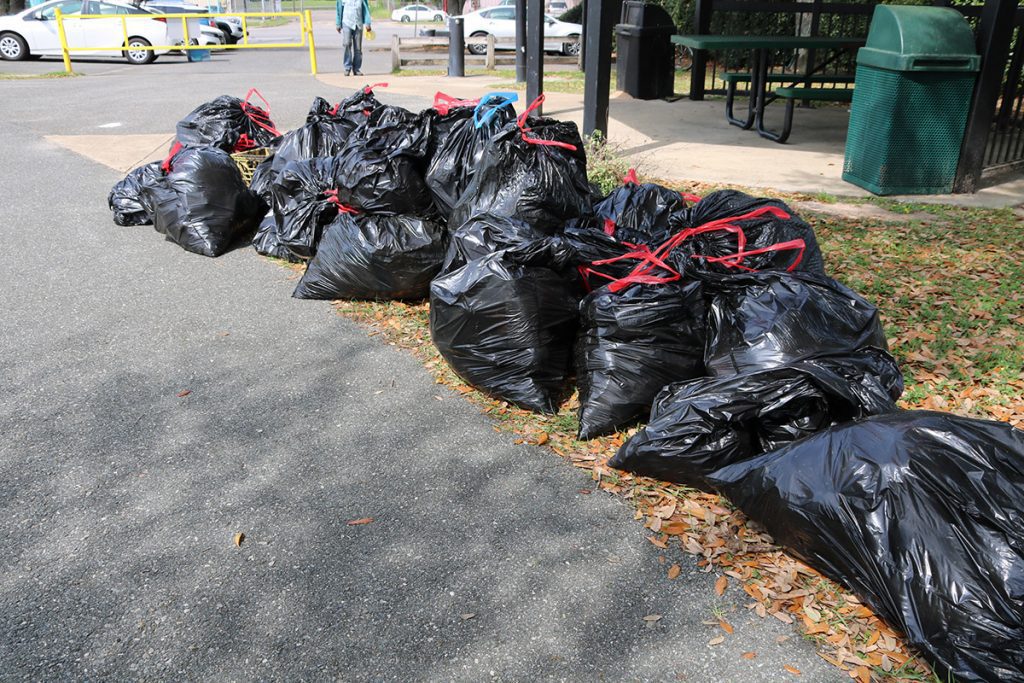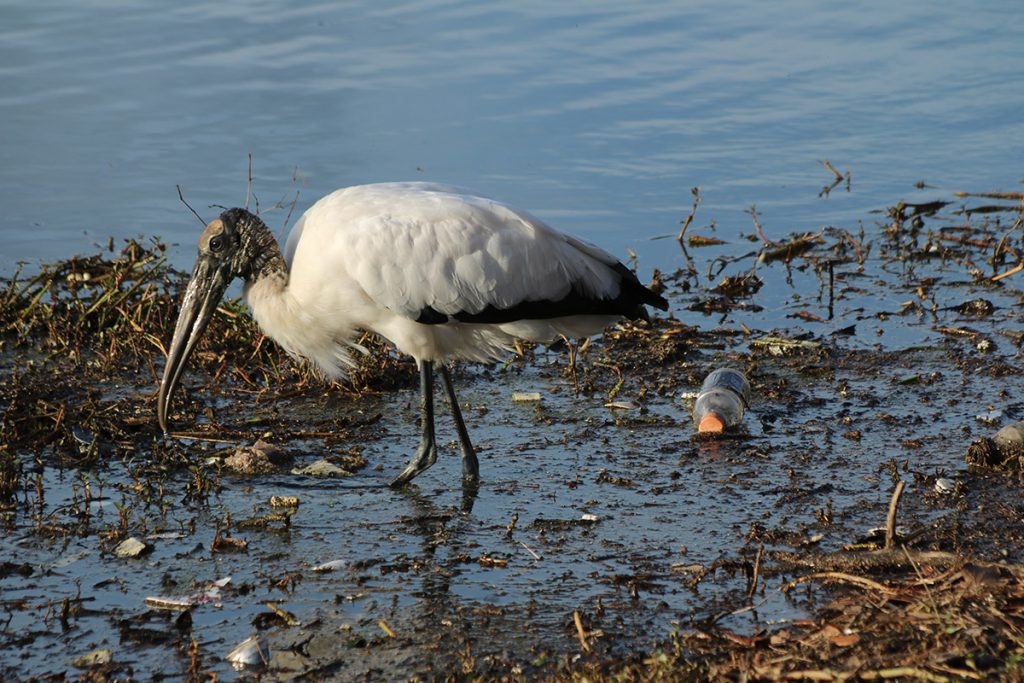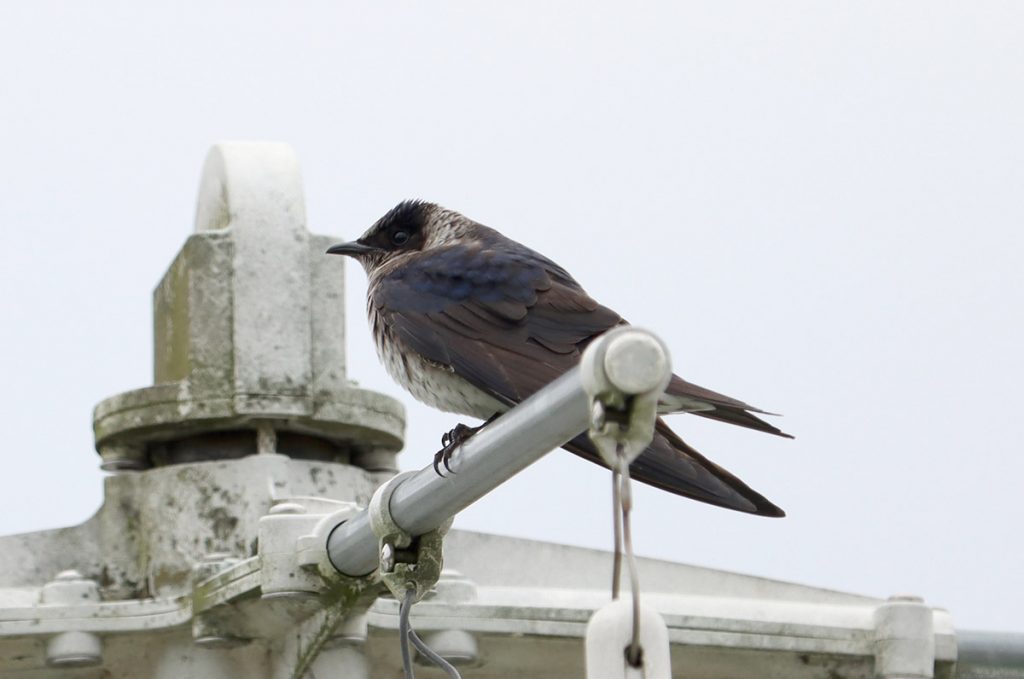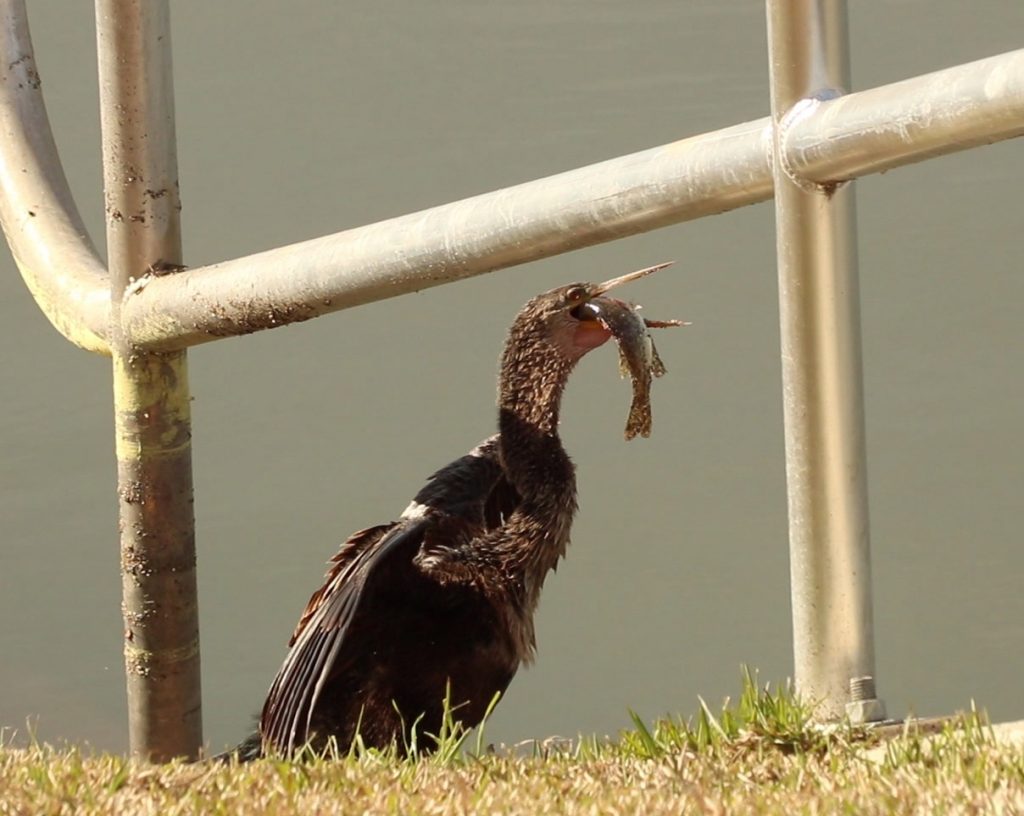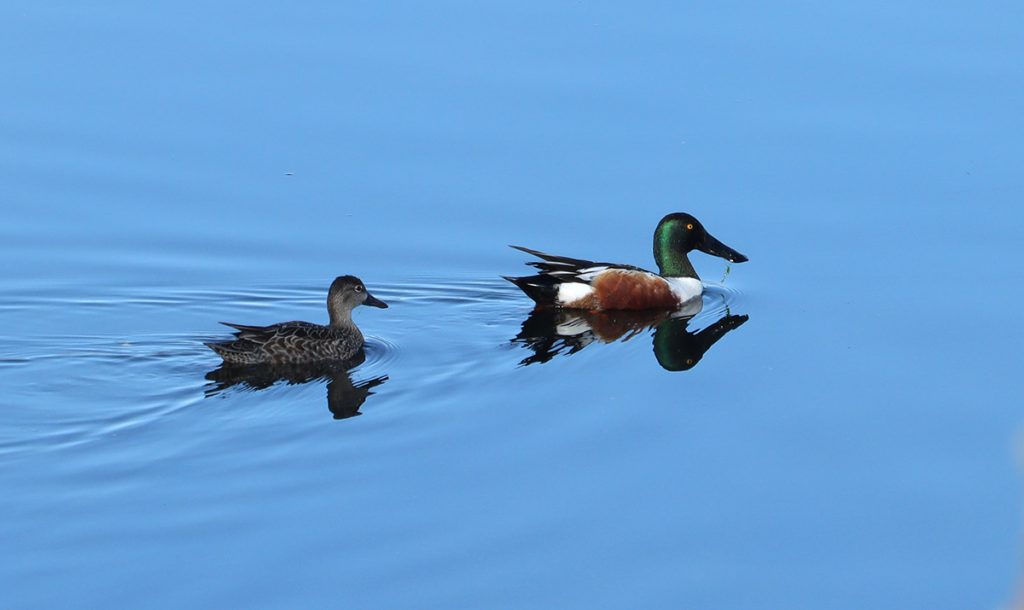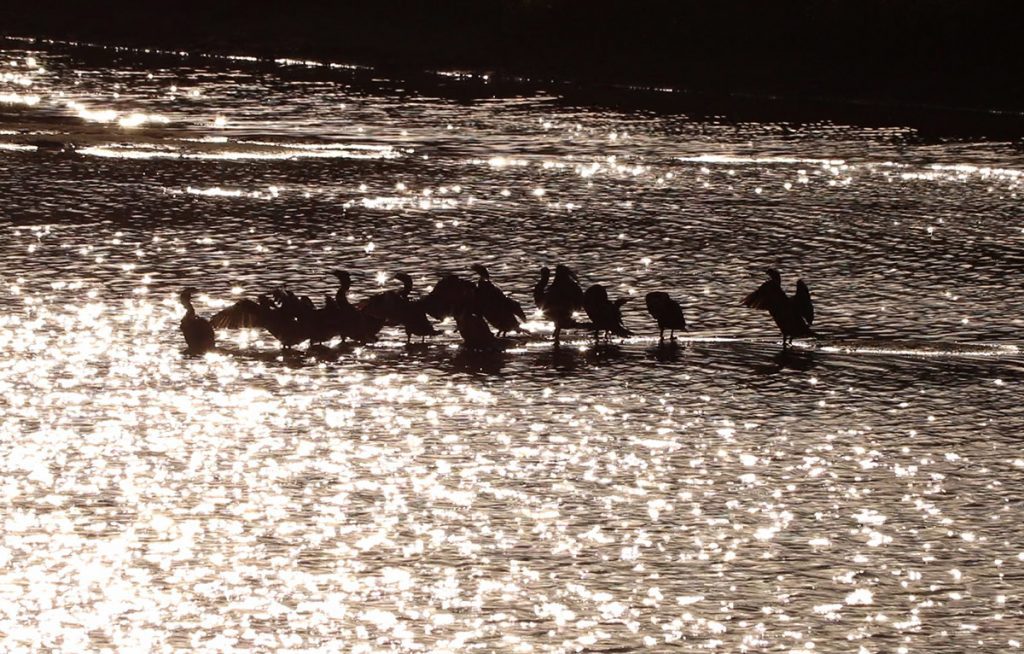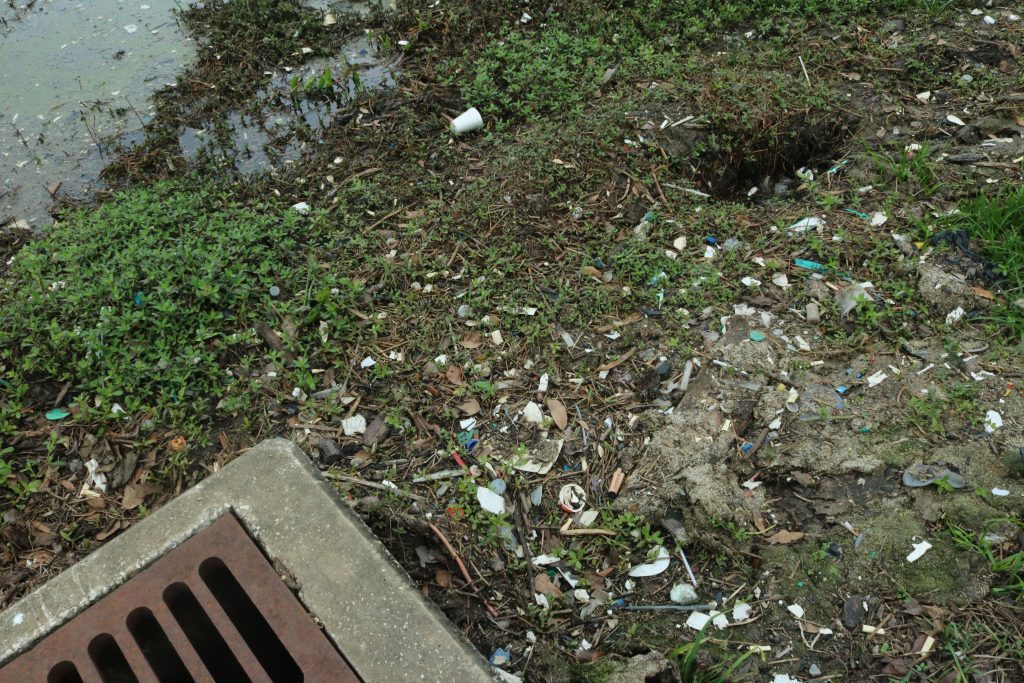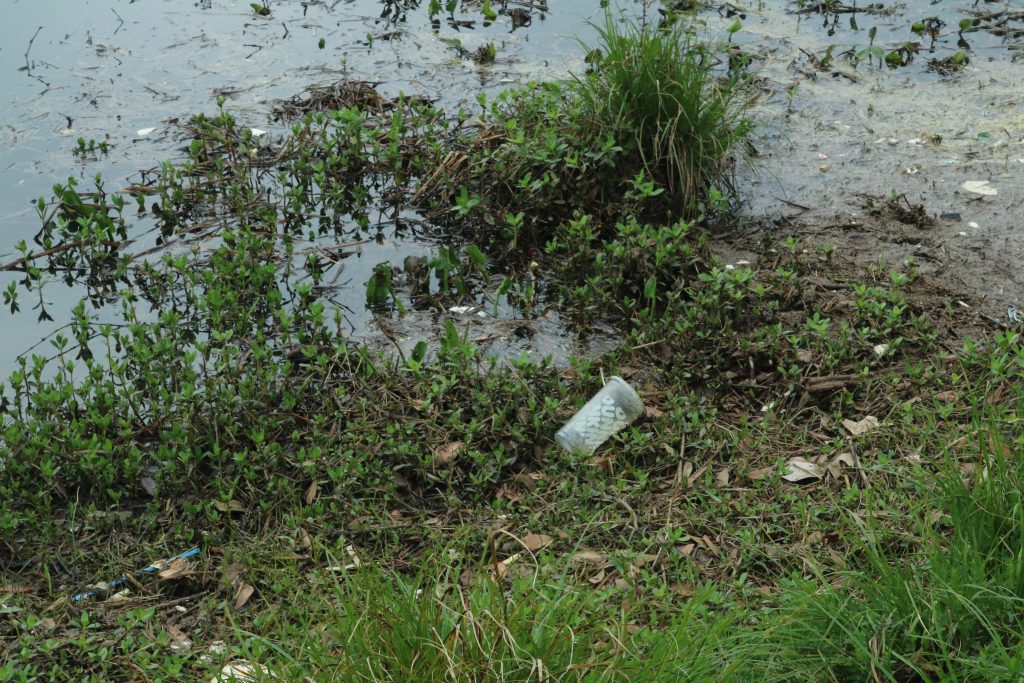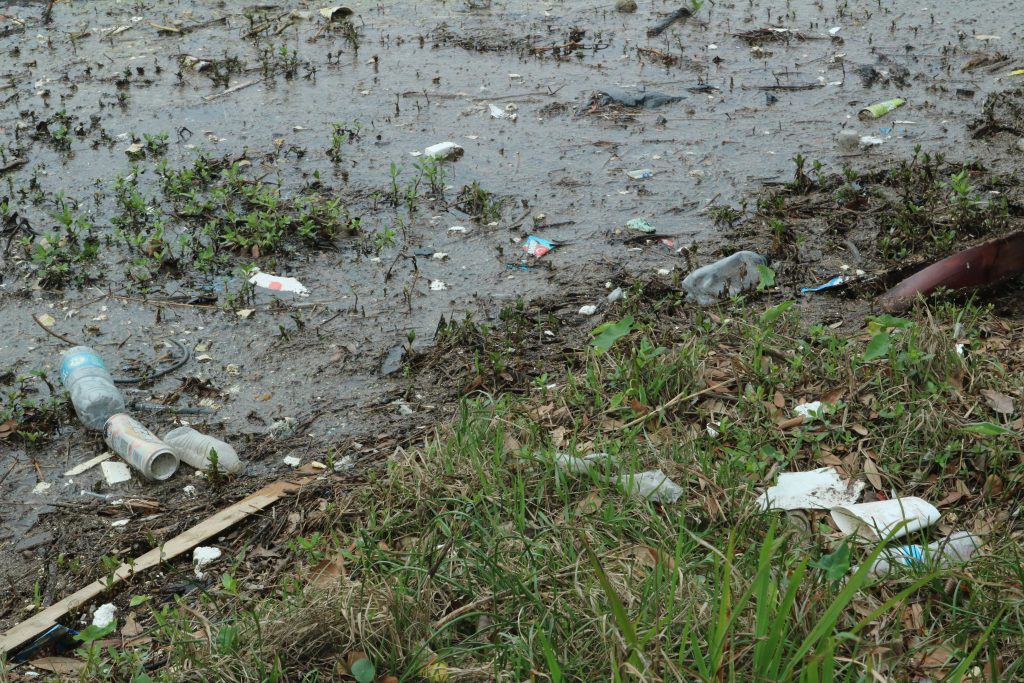Chloe Thompson is a SAIL High School student interning with WFSU as part of the Age of Nature project. She spent a semester getting to know Lake Elberta, and helped organize a cleanup there in March of 2021. Chloe closes out her internship with a look at fixing Lake Elberta’s garbage issue- in the long term.
In February of 2021, I had visited Lake Elberta for the very first time. Before then, to be honest, I probably had driven by it countless times, but never seemed to notice it until intentionally looking for it. The park was a truly beautiful place, filled with all sorts of wildlife and lively with visitors.
The more I visited, the more I started to notice about the park. Like what species inhabited the park, the variety ranging from wood storks to Canadian geese. These animals using this place as a shelter year-round, and many others like Purple Martins and many duck species using it as a migration spot.

A wood stork (Mycteria americana) 
Purple Martin (Progne subis) 
Anhinga (Anhinga anhinga) 
Northern shovelers (Spatula clypeata) 
Double crested cormorants (Phalacrocorax auritus)
This gorgeous place is not just a place where birds go to hang out, humans also use this place for recreational purposes. One of the most common activities here is bird watching. Lake Elberta is in the Top 4 hotspots for birdwatching in Leon County (according to the Cornell Lab of Ornithology’s eBird database).
But, along with noticing those things, I have also noticed one major issue at Lake Elberta: trash. Garbage fills the banks of the lake. If this trash situation continues, the land and the species living there will continue to suffer from the waste.
How does all this trash get to Lake Elberta?
All this trash gets into Lake Elberta because the lake is a retention pond. It’s a man-made pool constructed to store water runoff from neighborhoods, busy streets, and other city areas.
In a recent unpublished study by researchers Alexis Chavez and Nelson Ball, they found that the majority of Lake Elberta’s trash comes from the nearby storm drainage system which includes FSU and the urban areas to the south of campus. Elevation maps of the areas show property with the lowest elevation are directly adjacent or right next to Lake Elberta.

The sites in this study labeled A, B, and G, which are close to Lake Elberta, were the zones that were found to be producing the most trash that goes into the park. Site B is the area across from Lake Elberta, along Jackson Bluff Road. Site A is to the east of Lake Elberta. Meanwhile, site G is located across Gaines Street from site A. All three sites contain student housing, and students tend to produce more “take-out” waste than other households.
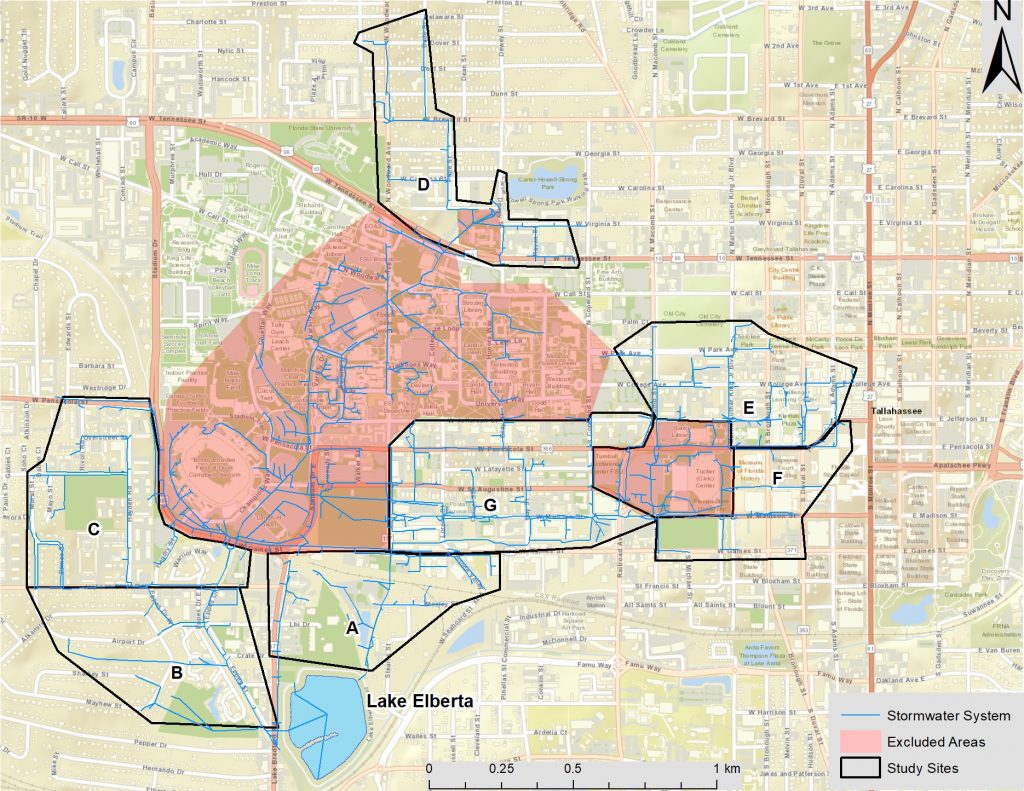
Sites A, B, and G have a lower elevation then the other study sites, similar to Lake Elberta’s. Due to their lower elevation, waste from higher elevated lands tend to roll down into these areas and collect. The waste eventually ends up in storm water systems after weather conditions transporting it there (wind, rain, etc.).
What can we do to keep the park and the Earth clean?
Humans are the reason why this park has all this trash . But being more aware about our habits can allow us to alter them in order to be more eco-friendly, not just for this park, but in general.
Just in our day-to-day lives, humans produce of great deal of trash, a single person on average producing roughly six pounds of trash per day (according to the EPA)! More than 70-percent of that trash is unrecyclable waste. If we collectively alter some habits, we can definitely lower the amount of litter in Tallahassee by quite a bit.
A way to keep our Earth cleaner is using biodegradable or reusable alternatives of plastic utensils such as like straws, forks, spoons, knives, cups. Biodegradable options are designed to decompose and break down much faster than plastics. Meanwhile, reusable alternatives reduce plastic waste.
Another way to specifically keep Lake Elberta cleaner is to hang onto your trash until you get to a trash can. This would allow that trash to be picked up and sent to a proper landfill instead of it ending up in the storm water systems. This would help cut down the amount of trashed poured into the lake regularly.
Another way is to pick up the trash you cross when around the area. Or, on an even bigger scale, dedicate a little time to cleaning up the area, which was actually something that happened in late March of 2021.
Lake Elberta Clean Up
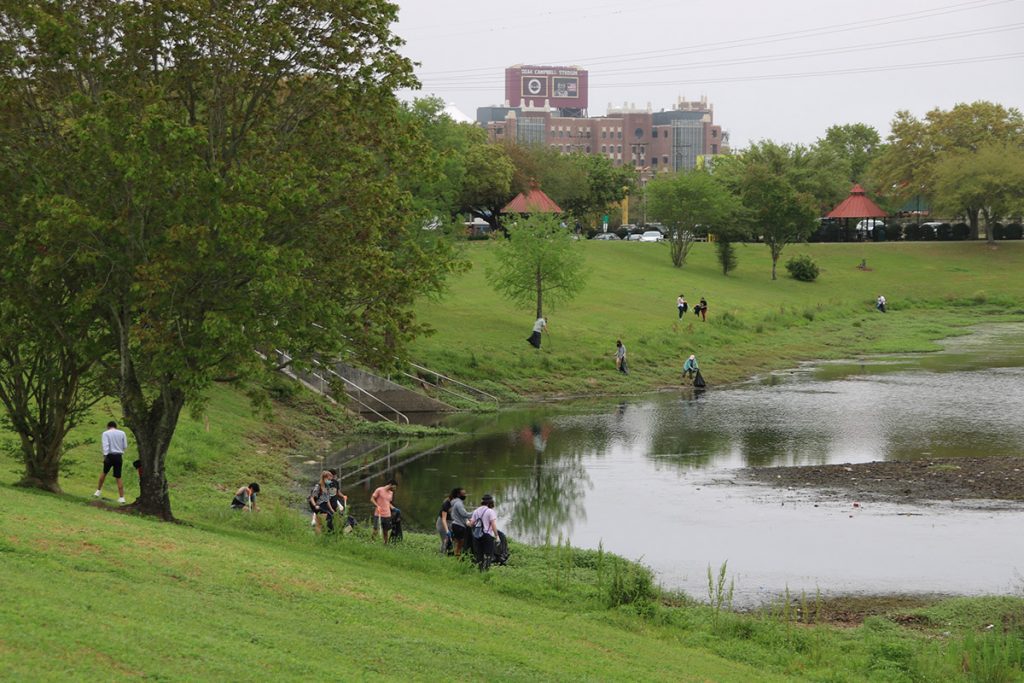
In late March of 2021, I had helped organize and participated a community clean up event at Lake Elberta to help with this trash issue. The event not just intended to help the environment, but to also educate the community on spreading awareness about our impact on the environment.
This two-hour event in the end collected forty bags of trash from the retention pond! Which, even though it does not seem like much compared to how much is flowed into that pond on a daily basis, made a dent into the trash issue. Not just because it took trash from the area, but it potentially inspired and affected others habits and outlooks. The event might have inspired both volunteers and bystanders to, in the future, go back to the park and clean up some of the park in their spare time.
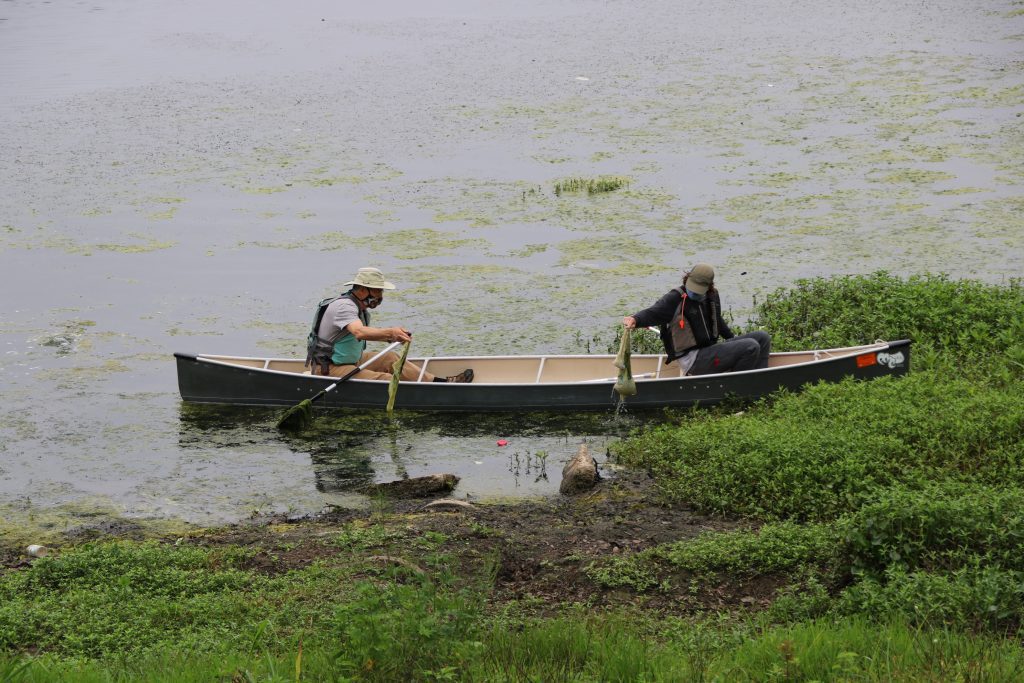
During this cleanup, I noticed a couple of things. One of these things is that a good portion of the trash was plastic utensils, tobacco products (cigarettes, cigars, etc.), Styrofoam cups and boxes, and various other plastic items. A majority of products are rather difficult to breakdown to into the soil, especially without majorly hurting the environment.
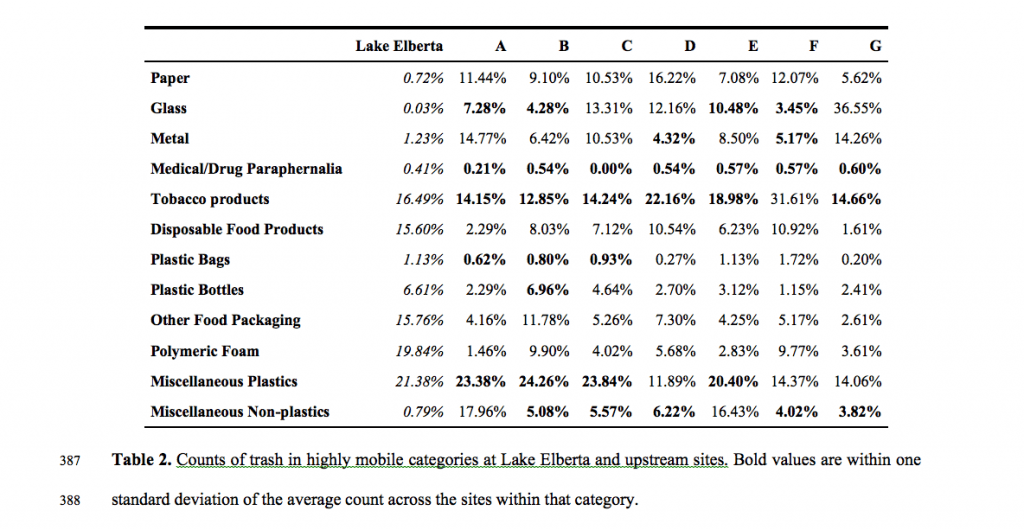
What are some possible solutions to help fix this issue?
From several sources I have read and my own observations and research, I would like to discuss two ways to help with this trash issue.
Solution 1: Installing Grates on Stormwater Drains
One way, which was a solution discussed in the study performed by Alexis Chavez and Nelson Ball, is the addition of grates. According to Apalachee Audubon’s Peter Kleinhenz, this solution would be to “implement a system whereby grates are put on every single storm water drain in town.”
The grates would collect the trash that would normally go into the water systems and eventually into Lake Elberta. It would allow the trash to pile up into streets and wherever else the trash is originating from.
“I like that idea,” Kleinhenz says. “Because then the trash piles up in the areas where the trash originated, instead of being a problem downstream communities, who are already experiencing a lot, have to deal with… It’s a really not-to-expensive solution to this problem.”
“This isn’t where the trash is coming from,” Kleinhenz adds. “This is where the trash is ending up.”
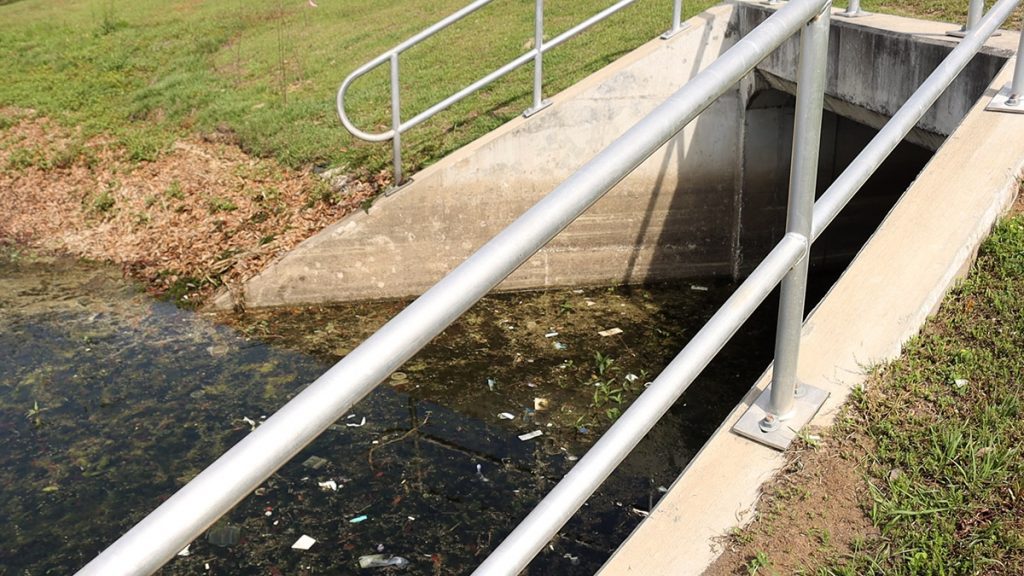
Solution 2: Fixing the Trash Collector at Lake Elberta
Now there has been effort to fix this trash problem, and that was the addition of the trash compactor system applied to the retention pond. The device being designed to collect the trash inside the pond, cycling the waste out of the pond so it does not build up and further damage the environment.
However, the trash compactor does not seem to be in operation. This might be due to it being clogged or something along those lines, but regardless of how, it does not seem to be collecting that waste. Meaning that the trash that should be cycled in and out of the lake is just collecting into the lake.
Another solution that could help this trash problem is getting the trash compactor back into operation.
Get to know Chloe on our Voices that Inspire radio series! In this segment, she talks about starting to connect with her Muscogee roots. A few years back, we met her father Chris, a Muscogee shell carver.
Chloe’s internship was funded by a grant from the PBS program Age of Nature.
